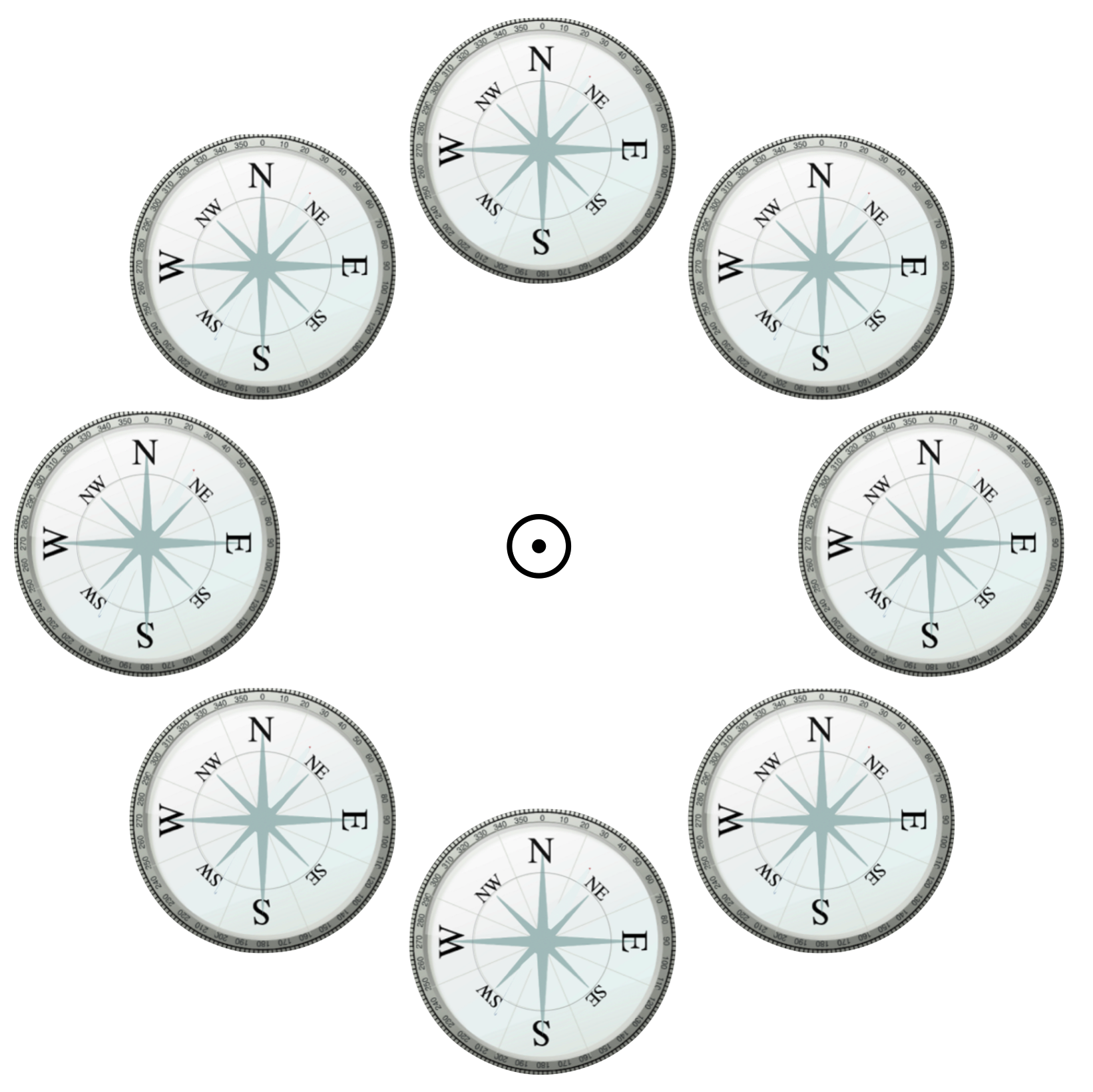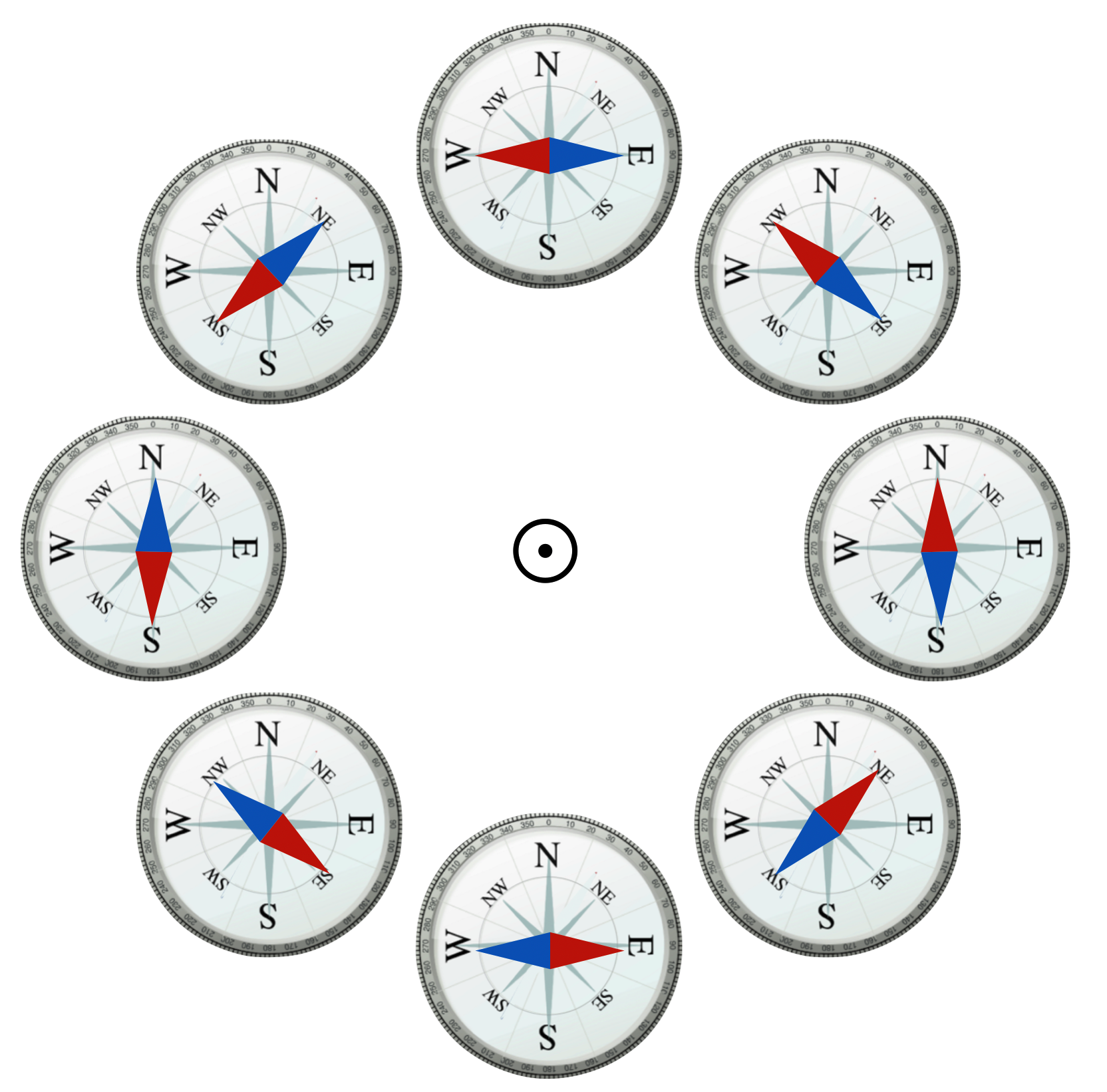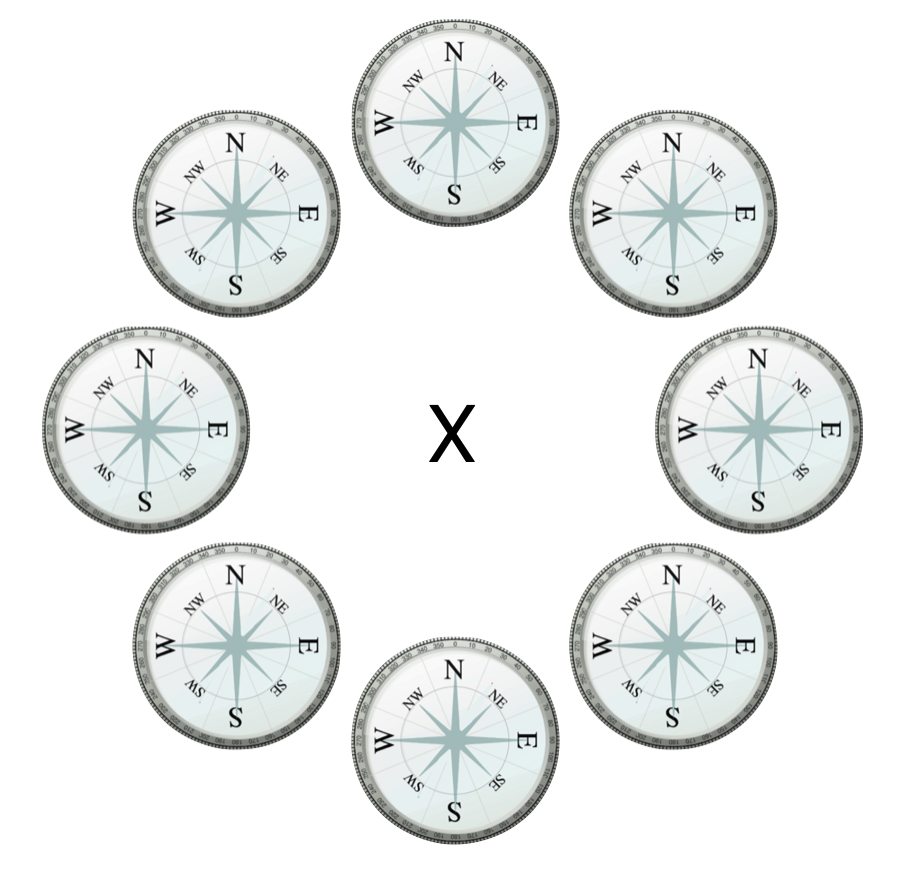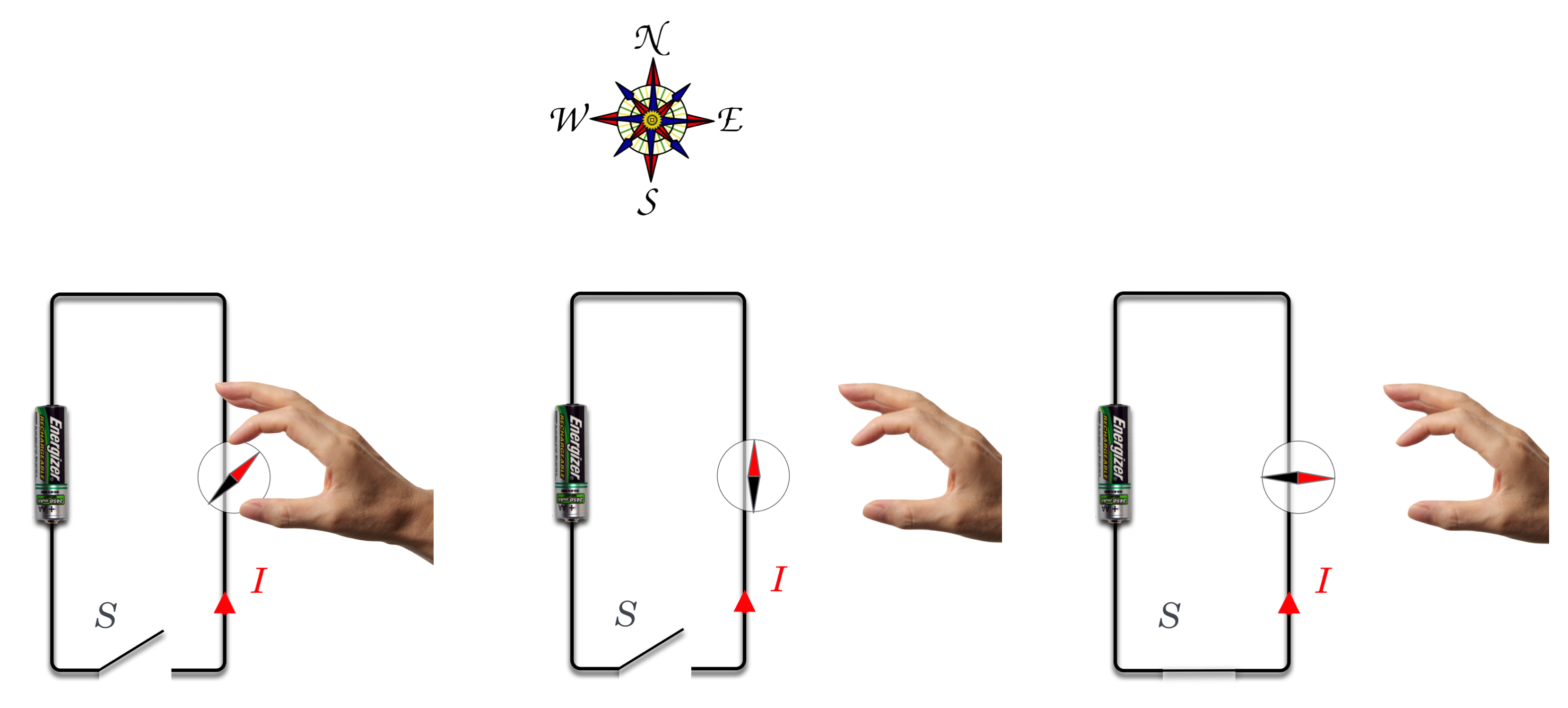Charge It! Charges and Magnets
Example 2: Another Look at the Oersted Discovery
The Question:
Let's practice with the magnetic disturbance created by an electric current. Mr Oersted's surprise lecture. This figure is meant to represent a wire with a current flowing from A to B or B to A. It flows through two rings of compasses which you can see have no needles showing. The current would cause the needles to move and we want to figure out what directions.

The Answer:
Remember that when we show a current (or anything with a direction, like a vector...although a current isn't technically a vector in our circumstances) piercing the screen (or paper) it can go in away from you or out at you.
a current (or vector) coming out is drawn as a dot and circle–representing the head of an arrow,
a current (or vector) going in is drawn as an "X"–representing the tail feathers of an arrow.
So, here's an end view of the above perspective view with the current coming out:

What direction would the compass needles point: clockwise or counterclockwise?
To answer this you get out your right hand (that's the knife and spoon side) and put your thumb in the direction of the current and your fingers will curl around in the direction of the magnetic disturbance and the compass needle will track it...like Mr Oersted's. They will all point in a circle, counterclockwise. Here's how that would look:

Now you know what's coming next. Here's another current, going in:

Get out your right hand and now the thumb points into the "paper" and your figures curl in the other direction: clockwise.
Notice that this is a little different from the figure that is in the text. There, the single compass is held above the current and flat, but that doesn't affect the needle direction.
